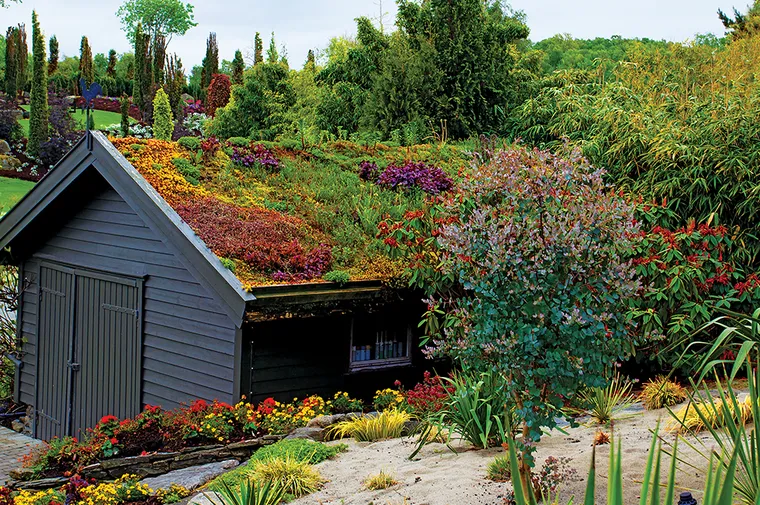Although a powerful conservation tool, maintenance and funding limit widespread installation
For more than a decade, green roofs have taken hold in various North American cities, with some serving a purely ecological purpose, while others have grown into major tourist attractions. Despite this track record, many park departments are simply testing them out in lieu of larger plans. Take, for instance, the garden roof in Seattle’s Ross Playground.
“The roof project was essentially a trial, an experiment that the Seattle Public Utilities wanted to run with Seattle Parks,” says Redi Karameto, Senior Architect for Seattle Parks and Recreation’s Planning and Capital Development Branch.
Located in the city’s Fremont neighborhood, the green roof sits atop a dual-purpose building that houses public restrooms and a meeting space. Karameto says its primary purpose was to measure stormwater outfall from the roof before and after the installation, with the roof acting as a test case for green stormwater solutions throughout the city. The project wasn’t intended to be long-term—grant funds covered the initial install and up to three years of maintenance—but the roof garden remains in place.
It may have served as the push Seattle Parks and Recreation (SPR) needed. Karameto says two new green-roof projects were underway: atop a one-story structure within The Seattle Children’s PlayGarden, and as part of the Northwest Native Canoe Center, which is moving forward in collaboration with the United Indians of All Tribes. But, by and large, municipalities have been slow to adapt.


